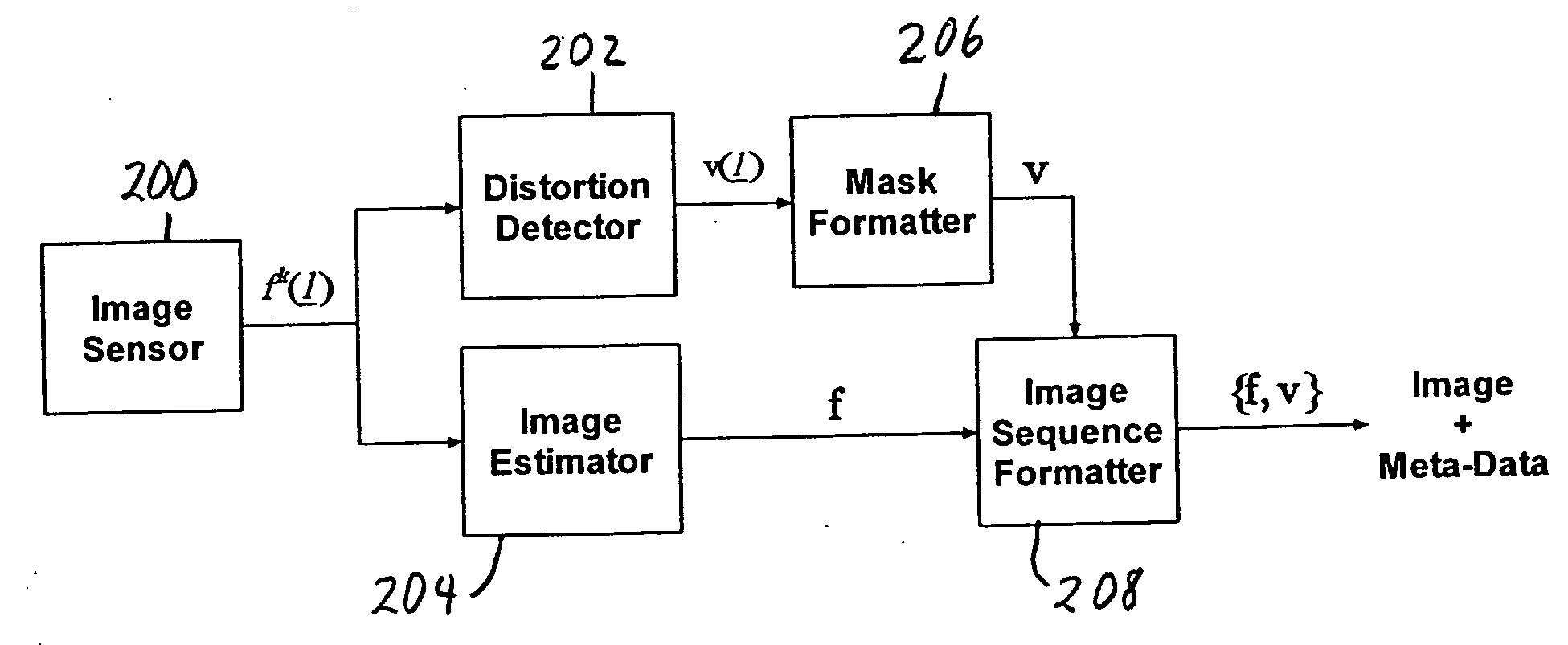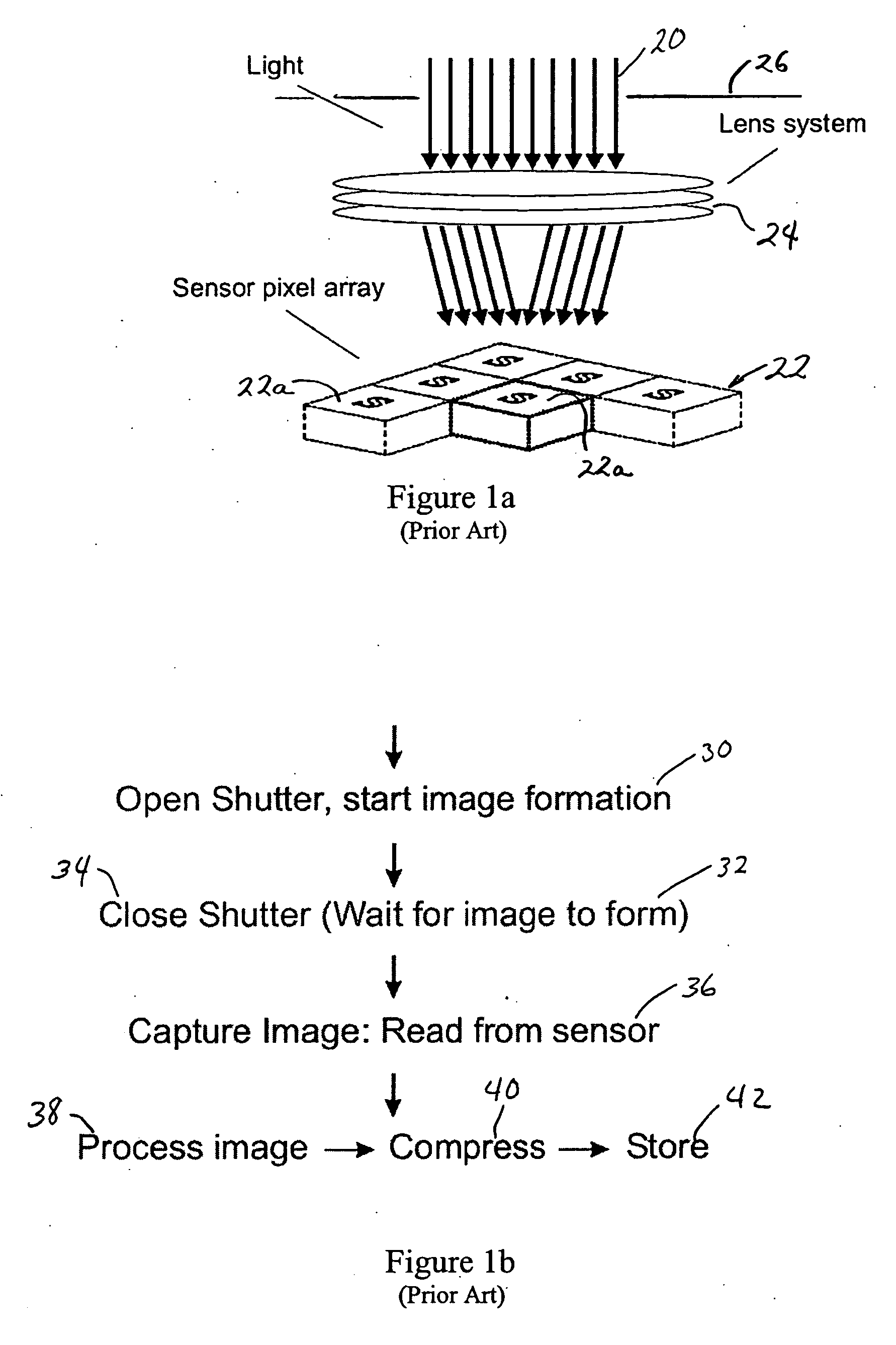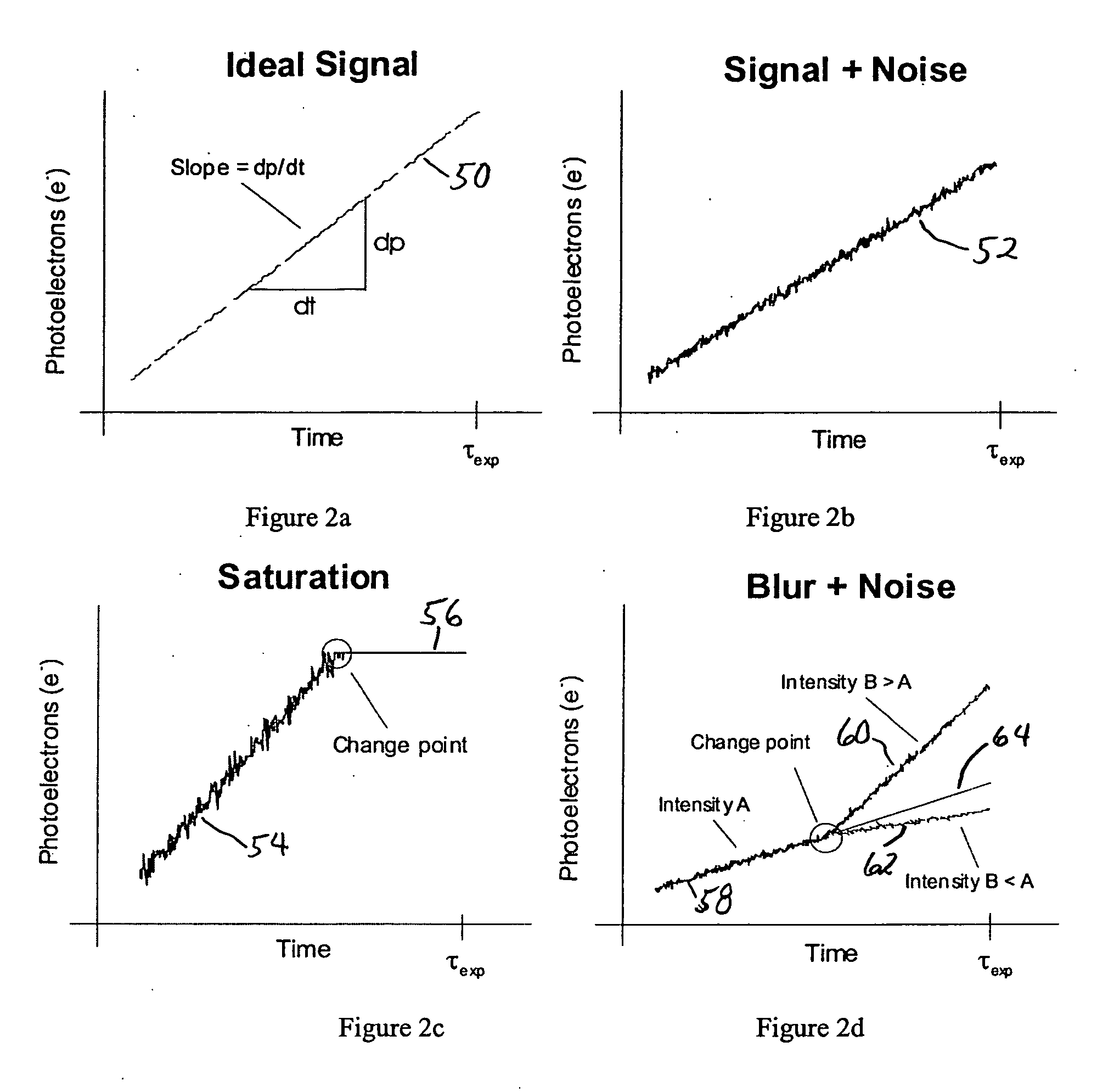Method and device for sensor level image distortion abatement
a technology of sensor level and distortion abatement, which is applied in the field of capture, analysis and enhancement of digital still images, can solve the problems of lossy compression, inaccurate lens settings, and new challenges in the processing of digital still images and video, and achieve the effect of facilitating high level processing
- Summary
- Abstract
- Description
- Claims
- Application Information
AI Technical Summary
Benefits of technology
Problems solved by technology
Method used
Image
Examples
Embodiment Construction
The present invention provides for obtaining meta-data relating to the image formation and for processing of the image using the meta-data. The meta-data may be output with the image data or the output may be only the image data. In general, the following description relating to FIGS. 2a to 12 is directed to obtaining and outputting the meta-data, whereas FIGS. 13-14 relate to processing of the image using the meta-data.
In an embodiment of the present invention, information regarding the scene is derived from analyzing (i.e. filtering and processing) the evolution of pixels (or pixel regions) during image formation. This methodology is possible since many common image distortions have pixel level profiles that deviate from the ideal. Pixel profiles provide valuable information that is inaccessible in conventional (passive) image formation. Pixel signal profiles are shown in FIGS. 2a, 2b, 2c and 2d to illustrate common image and video distortions that occur during image formation....
PUM
 Login to View More
Login to View More Abstract
Description
Claims
Application Information
 Login to View More
Login to View More - R&D
- Intellectual Property
- Life Sciences
- Materials
- Tech Scout
- Unparalleled Data Quality
- Higher Quality Content
- 60% Fewer Hallucinations
Browse by: Latest US Patents, China's latest patents, Technical Efficacy Thesaurus, Application Domain, Technology Topic, Popular Technical Reports.
© 2025 PatSnap. All rights reserved.Legal|Privacy policy|Modern Slavery Act Transparency Statement|Sitemap|About US| Contact US: help@patsnap.com



